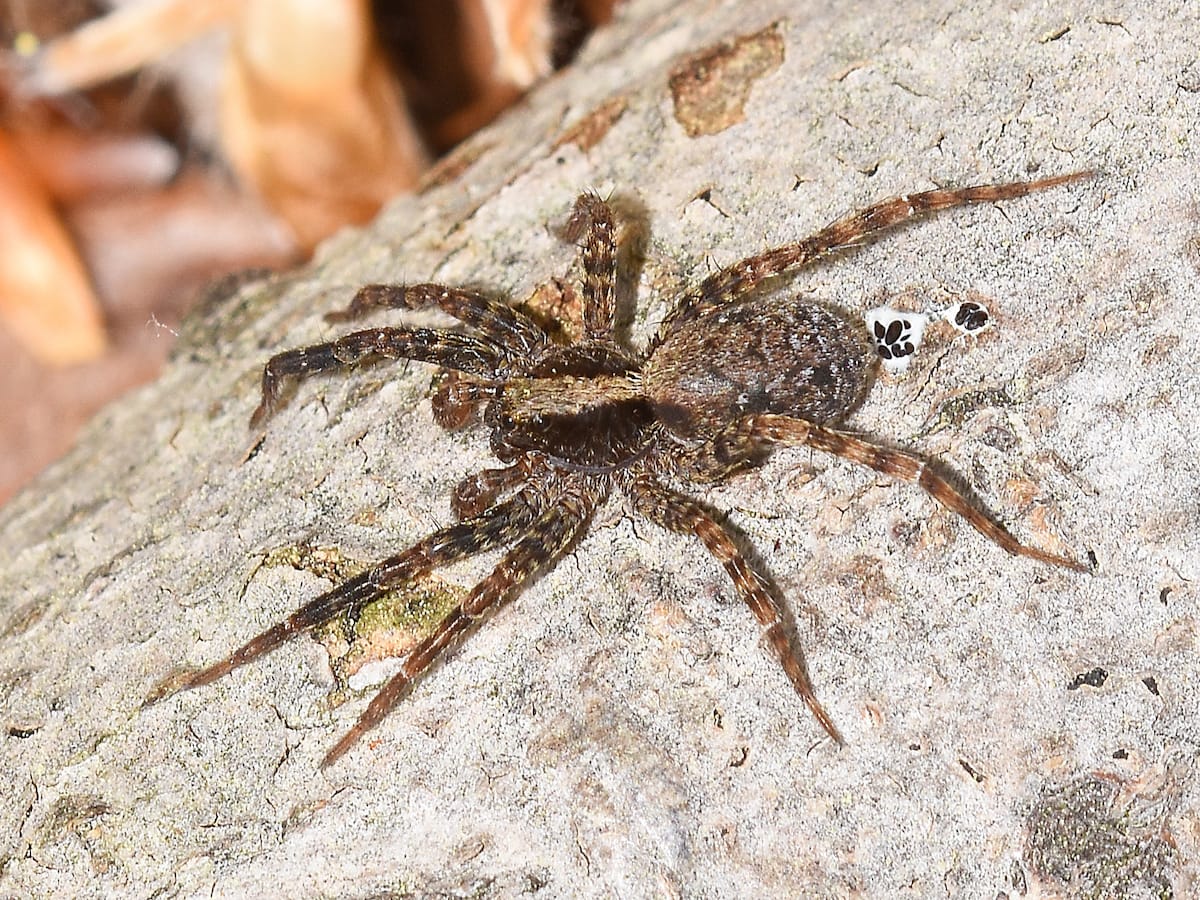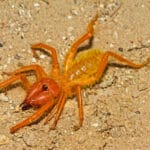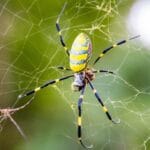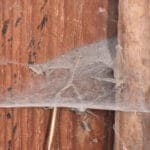Wolf spiders, with their imposing size and eight watchful eyes, often evoke fear and anxiety in people. But are these common spiders truly dangerous, or are they victims of bad PR? This article delves into the reality of wolf spiders, separating fact from fiction to better understand their behavior, the potential risks of their bites, and their surprising role in our ecosystem.
Unveiling the Truth About Wolf Spider Bites
Let’s address the most pressing question: are wolf spiders harmful? The answer is more nuanced than a simple yes or no. While it’s true that wolf spiders are venomous, their venom is specifically designed to subdue their insect prey. For humans, a wolf spider bite is unlikely to cause serious harm.
Most people bitten by wolf spiders experience symptoms comparable to a bee sting:
- Localized Pain: A sharp, stinging sensation at the bite site.
- Redness and Swelling: Inflammation around the affected area.
- Itching: A common reaction as the bite heals.
These symptoms typically subside within a few days and rarely require medical attention. However, it’s essential to remember that individuals can react differently to insect bites and stings.
When a Wolf Spider Bite Requires Medical Attention: Understanding Allergic Reactions
While wolf spider venom poses minimal risk to most people, some individuals may experience an allergic reaction. Allergic reactions can vary in severity and may present with symptoms such as:
- Difficulty Breathing: A feeling of tightness in the chest or wheezing.
- Rapid Heartbeat: A racing or irregular pulse.
- Facial Swelling: Swelling around the eyes, lips, or tongue.
- Dizziness or Fainting: A sudden feeling of lightheadedness.
If you or someone you are with experiences any of these symptoms after a spider bite, seek immediate medical attention. These reactions can escalate quickly and require prompt treatment.
Debunking the Myths: Why Wolf Spiders Aren’t Out to Get You
Despite their intimidating appearance, wolf spiders are generally not aggressive towards humans. They are far more likely to run and hide than to attack. Bites typically occur when the spider feels threatened or trapped, such as when accidentally handled or stepped on.
Here’s a closer look at common misconceptions surrounding wolf spiders:
- Myth: Wolf spiders are aggressive and will chase you down.
- Fact: Wolf spiders are shy and prefer to avoid confrontation. They are more likely to retreat than to attack.
- Myth: Wolf spiders are highly venomous and their bites can be deadly.
- Fact: Wolf spider venom is not potent enough to cause significant harm to humans. Fatalities from wolf spider bites are extremely rare and almost always linked to allergic reactions.
The Wolf Spider in Your Home: Pest Control or Nuisance?
While encountering a wolf spider in your home can be unsettling, these arachnids are more likely to be beneficial than harmful. Wolf spiders are adept hunters and play a crucial role in controlling populations of insects considered pests. They are particularly fond of:
- Cockroaches: A common household pest known to trigger allergies and spread disease.
- Earwigs: Insects that can damage plants and invade homes in large numbers.
- Flies: Nuisance pests that can contaminate food and spread germs.
Instead of fearing wolf spiders, consider their presence a natural form of pest control.
What to Do if You See a Wolf Spider: A Guide to Peaceful Coexistence
Encountering a wolf spider in your home doesn’t have to be a cause for panic. Here’s a step-by-step guide on how to handle the situation calmly and humanely:
- Identify the Spider: Before taking any action, make sure you’ve correctly identified the spider as a wolf spider. Look for their characteristic features: large size, hairy body, dark brown coloration, and prominent eyes arranged in two rows.
- Assess the Situation: If the spider is in a secluded area and not posing an immediate threat, consider leaving it be. They are likely just passing through and will move on their own.
- Relocation, Not Termination: If the spider’s presence makes you uncomfortable, resist the urge to squish it. Instead, use a humane method to relocate it outdoors.
- The Cup-and-Release: Gently trap the spider under a cup or jar, then slide a piece of cardboard underneath. Take the spider outside and release it a safe distance from your home.
- Vacuum Assist: For spiders in hard-to-reach areas, use a vacuum cleaner with a hose attachment on a low setting to gently suck up the spider. Empty the vacuum canister outdoors to give the spider a chance to escape.
Preventing Wolf Spiders: Keeping Your Home Uninviting
You can take several measures to discourage wolf spiders from taking up residence in your home:
- Seal Entry Points: Inspect your home’s foundation, doors, and windows for any cracks or gaps that could serve as entry points for spiders. Seal these openings with caulk or weatherstripping.
- Reduce Clutter: Wolf spiders are attracted to dark, cluttered areas where they can hide undisturbed. Minimize clutter in basements, attics, and garages to make your home less appealing.
- Outdoor Lighting: Insects are drawn to outdoor lights, attracting the spiders that prey on them. Consider using sodium vapor bulbs, which are less attractive to insects, or simply reducing outdoor lighting to discourage spider activity around your home.
Coexisting with Caution: The Importance of Understanding
Wolf spiders, though often misunderstood, play a vital role in our ecosystem. They are not aggressive house invaders seeking to harm humans but rather shy creatures simply trying to survive. By understanding their behavior and taking simple precautions, we can coexist peacefully with these fascinating and beneficial arachnids.
Are Australian Wolf Spiders Dangerous?
Australia, known for its diverse and sometimes deadly wildlife, often conjures up images of giant, venomous spiders. But what about Australian wolf spiders? Are they a cause for concern?
Similar to their counterparts in other parts of the world, Australian wolf spiders are venomous. However, their venom is not considered dangerous to humans. Bites typically result in:
- Localized Pain and Itchiness: The most common symptoms are discomfort and irritation around the bite area.
- Swelling: Some swelling is to be expected as the body reacts to the venom.
“Australian wolf spider bites generally only cause mild symptoms like localised pain or itchiness.” – Fast Facts on the Australian Wolf Spider – Australia Wide First Aid
However, it’s important to remember that individual reactions can vary. People with allergies to spider venom, or those with compromised immune systems, might experience more severe reactions and should seek medical attention if bitten.
First Aid for Australian Wolf Spider Bites: Simple Steps for Relief
If you suspect you’ve been bitten by a wolf spider in Australia, here are some basic first-aid measures you can take:
- Clean the Bite: Wash the affected area thoroughly with soap and water to minimize the risk of infection.
- Apply a Cold Compress: A cold pack or ice wrapped in a towel can help reduce swelling and numb the area, providing pain relief.
- Consider Over-the-Counter Pain Relievers: If the pain is bothersome, over-the-counter pain relievers like ibuprofen or paracetamol can help manage discomfort.
Remember, if you are concerned about a bite, or if symptoms worsen or don’t improve within a day or two, it’s always best to consult a medical professional.
Beyond the Bite: Appreciating the Ecological Role of Wolf Spiders
While their appearance might make you shudder, wolf spiders play a critical role in Australia’s ecosystem. They are skilled hunters, helping to keep populations of other invertebrates in check. These eight-legged predators are particularly fond of:
- Cockroaches: Known to spread diseases and trigger allergies.
- Crickets: Often considered a garden pest.
- Other Spiders: Wolf spiders even prey on other spider species, helping to regulate their numbers.
By controlling pest populations, wolf spiders contribute to a healthy and balanced ecosystem.
Living in Harmony: Minimizing Encounters with Wolf Spiders
While they are generally not aggressive towards humans, encountering a wolf spider in your home or garden can be an unnerving experience. Here are some tips to help you minimize those encounters:
- Reduce Hiding Places: Wolf spiders are attracted to dark, cluttered areas. Keep your yard tidy by clearing away debris, leaf piles, and woodpiles.
- Seal Cracks and Gaps: Inspect your home’s foundation and walls for any cracks or gaps that could allow spiders to enter. Seal these openings with caulk or weatherstripping.
- Shake Out Shoes and Clothing: Wolf spiders are known to seek shelter in dark, undisturbed places, including shoes left outside and clothes piled on the floor. Give them a quick shake before putting them on to avoid any unwanted surprises.
Fascinating Creatures, Not Fearsome Foes: Changing the Narrative
By understanding more about wolf spiders, we can replace fear with respect. These often-maligned creatures are not out to get us but are simply trying to survive in a world that increasingly encroaches on their habitat. By taking simple precautions, we can coexist peacefully with these fascinating and ecologically important animals.
Speaking of fascinating creatures, have you ever wondered if are coyotes nocturnal animals? They’re not strictly nocturnal, but they are most active at dawn and dusk. Or perhaps you’ve wondered if are camel spiders venomous? Although they are often called camel spiders, they are actually a type of solifugid. Despite their fearsome appearance, they are not actually venomous to humans.
- Discover the Borough of Frenchtown, NJ: A Delaware River Town Blending History, Art & Nature - November 22, 2024
- Discover Clarks Grove, MN: A Small Town with a Big Heart - November 22, 2024
- Califon Borough, NJ: A Small Town with a Big Heart (and Rich History) - November 22, 2024














2 thoughts on “Are Wolf Spiders Actually Dangerous? Separating Fact from Fiction”
Comments are closed.